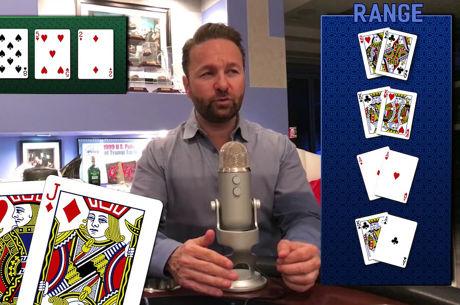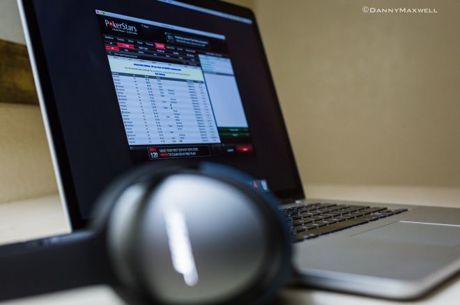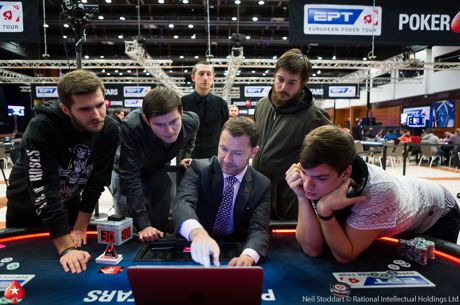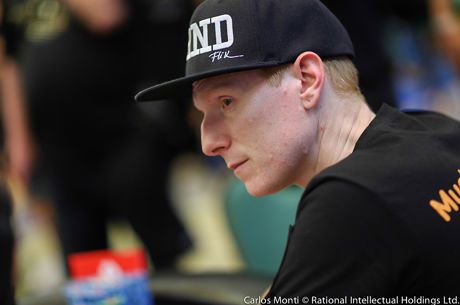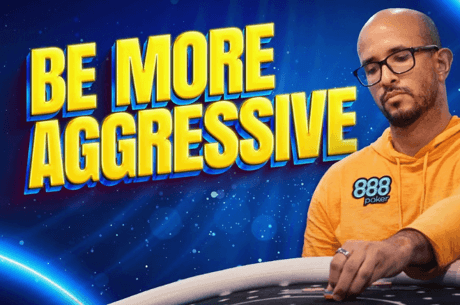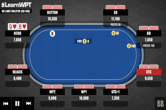Just Because a Card Improves Your Hand Doesn't Mean You Should Stay
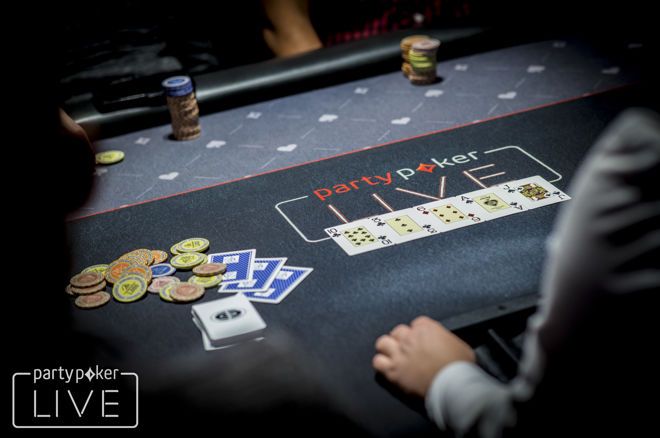
There is a style of playing no-limit Texas hold'em that assumes a few things it shouldn't.
I call it the "but I improved" approach, which says, if a board card improves one's hand, one must continue in the hand.
Let's look at a very simple situation to understand what it is that I mean by this mistake �� and why, more importantly, you might not always want to play this style yourself.
Establishing Early Ranges
The following online hand of 100NL ($0.50/$1) six-handed no-limit hold'em began with two regulars, each with 100 big blinds or so.
The first raised from middle position, the other called from the cutoff, and the rest stepped aside.
The flop came A?K?5?.
This represents a strong flop for both players in some sense. There are a lot of hands that middle position can raise the pot with before the flop, some of which will have hit this flop very hard.
Meanwhile, there are not that many hands that the cutoff simply calls with before the flop, and a high portion of those hands have also connected with this flop well.
While the middle position player has more complete misses (e.g., hands like 8?7? or 4?4?) when compared to the cutoff's middle-strength hands (e.g., hands like AxQx, AxJx, Ax10x, and suited hands like QxJx, KxJx, and Jx10x), the MP player's range is also "uncapped" which means the top of the MP player's range is stronger than the top of the cutoff's range.
This last point means that basically the cutoff can't look to bluff-raise the middle position player out of this pot.
And the reason is obvious �� the initial raiser can have AxAx, KxKx, and AxKx, not to mention 5x5x and Ax5x, and none of those hands is going anywhere.
In other words, if cutoff wants to get crazy, he'll risk running into hands that aren't folding and which have crushing equity against whatever bluffs the CO decides to attempt.
If middle position starts this flop by betting, then, the cutoff is better off starting out by playing a calling game, thereby retaining his positional advantage.
Every Card That Comes Reorders the Rest of the Deck
The middle position player indeed made a continuation bet and the cutoff called.
The turn then brought the 10?, making the board A?K?5?10?.
Think of it however you like, but how one sits in within own's range almost never stays the same from card to card �� unless you have, say, AxAx on a paired board with an ace, or you have the nut-low on a board with no straight or flush draw.
This board and this situation is a perfect example of that truth.
The middle position player bet again on this card. The cutoff held A?J?.
The answer is fold, but he called.
Why Fold Now?
If the cutoff can have A?J? in this situation, he can probably can have Ax10x-suited at least some amount of the time, too.
Therefore on this card the cutoff's range reordered itself.
Not only did his three QxJx-suited combos with which he floated make a straight, his flush draws made a flush, and his Ax10x-suited, previously worse than the AxJx he actually had, leaped ahead of both AxQx and AxJx.
A hand like A?J? (notably without a heart) is now somewhere near the bottom of the cutoff's own range.
But if you are like him and playing the "but I improved" version of poker, you would be hard-pressed to fold this card.
On the other hand, with what could middle position be double-barreling here? (That's a very salient question at small stakes online NL hold'em, by the way.)
Basically. any time the MP player has Q?Xx or J?Xx, he already has a made hand, so it is not that easy for him to have a pure draw.
Secondly, then, his made hands are all ahead of A?J?, some way ahead.
READ ALSO: Eight Reasons Why You Should Add Six-Card Omaha to Your Next Home Game
Results
There is not much more to say about the hand as it played out.
A?J? called the turn bet, then the river brought the 7?, making the final board A?K?5?10?7?.
The middle position player had A?K? and checked, and the cutoff checked back and lost.
A good case could be made that on this runout the cutoff's showdown value is low enough that he should bet as a bluff.
This makes sense on account of the fact that he was so low in his range on the turn he should have folded, and this particular river sent him even further down the pecking order.
But instead the cutoff thought otherwise and checked hoping to win with top pair.
At each and every point of the hand, the cutoff looked at his actual hand and the board but did not think about the other hands he could potentially have, much less about the hands his opponent could have.
A process, by the way, that is also known as playing poker.

